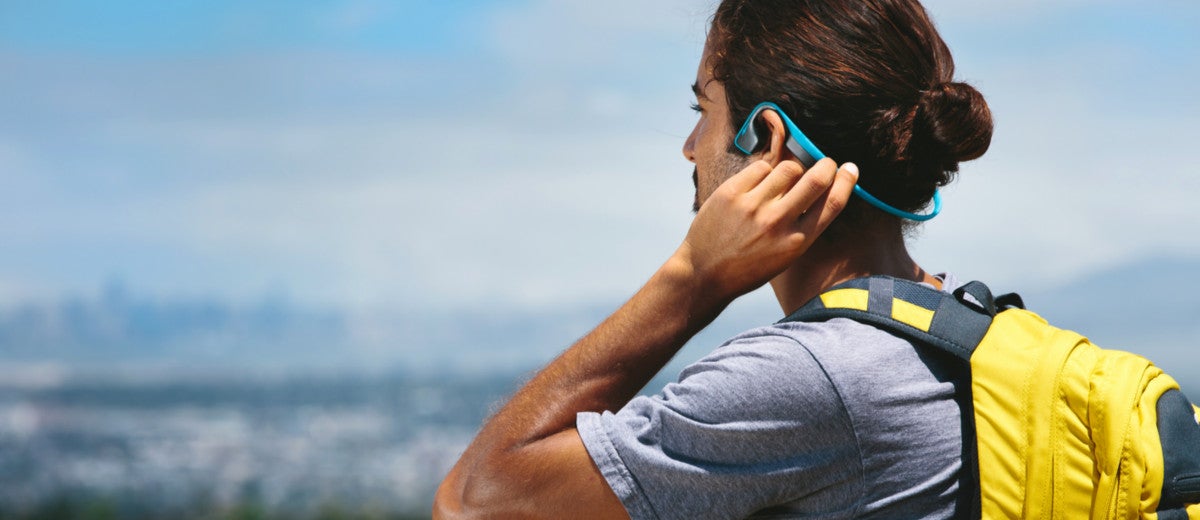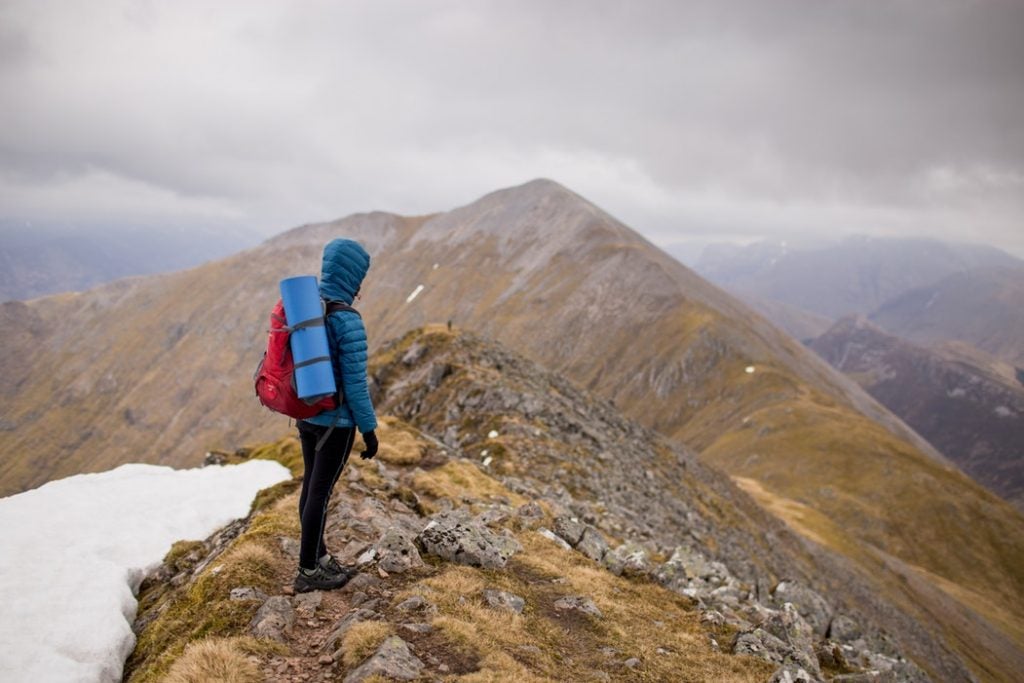Believe it or not, the future of sport headphones is based on a technology that’s about as old as the National Parks Service.
Bone conduction headphones were first patented in the 1920s, but the tech inside of them has rapidly improved in recent years. However, it’s only recently that manufacturers started to make this type of earphones specifically with active lifestyles in mind. Now bone conduction headphones are gaining popularity with joggers, cyclists, and hikers who want to rock out during a workout, while still being able to hear what’s going on around them.
Originally designed to help the hard of hearing, bone conduction headphones have largely been marketed to those who use auditory assistive devices. However, this style of earphones has become popular in the fitness and outdoor sectors for the same reason they are compatible with in-ear assistive devices— they don’t rely on or occupy your ear canal. That means users can remain aware of their surroundings.
https://www.instagram.com/p/Bg-_aJ4nWiO/?utm_source=ig_embed
Now hikers, bikers, campers, and others active in the outdoors are increasingly seeking out sport headphones that not only enhance their workouts and have great sound quality, but also help them remain safe and alert. Regardless of whether they’re for the hard of hearing, outdoor enthusiasts, or those who occupy both groups, bone conduction headphones work thanks to some seriously cool science. Here’s the scoop:
How Bone Conduction Headphones Work
Out-of-ear headphones work by sending sound waves through the bones in your face, jaw, or around your ears, rather than through the air in your ear canal. It goes against the way we usually think about hearing and how it works, but actually, you already hear through the bones in your face all the time.
Consider how you can hear a little bit— especially bass— even when you cover your ears. Or how different your voice sounds echoing around in your own head, rather than when you hear yourself on a recording.
Unlike conventional earphones, bone conduction headphones sit behind or in front of the ear rather than being tucked into the ear canal. AfterShokz is one company that has developed vibration headphones specifically for the outdoors, and their Trekz Air product delivers your favorite music through your cheekbones. This way you can be rocking out to Britney Spears through the bones of your face and hear the song clearly, while remaining aware of other important songs around you, like an approaching car or a fellow jogger.
Bone conduction headphones are safer and more convenient for people who want to listen to music without drowning out their surroundings. And in the outdoors, that’s especially important.
Plus, the technology has seriously improved over the years, reducing issues like sound leakage that lets everyone on the trail hear your music. (Most people don’t love that.)
Despite having more heft than your soft-cap earbuds, bone conduction headphones tend to be sturdy and lightweight, weighing you down no more than a pair of sunglasses. They’re also wireless, meaning they won’t turn into a terrible knot in your bag, and some boast as long as a six-hour battery life— perfect for day hikes, afternoon workouts, or several bouldering routes. These types of earphones are also structured with other accessories that you wear on your head in mind, like your bike helmet, for example, or a headlamp. In other words, a good pair of bone conduction headphones will play nice with your other gear.
Bone conduction technology has come a long way since the 1920s. Back then the best way to get the vibrations to your bones was to clamp metal plates between your teeth that transferred the sound. That was hardly a comfortable way to listen to your phonograph, especially while bombing down a single track on a big wheel penny-farthing bicycle in one of the newly founded national parks. (Although we do love the mental image!)
The Dyrt is the only camping app with all of the public and private campgrounds, RV parks, and free camping locations in the United States. Download now for iOS and Android.Popular Articles:
Articles on The Dyrt Magazine may contain links to affiliate websites. The Dyrt receives an affiliate commission for any purchases made by using such links at no additional cost to you the consumer.



